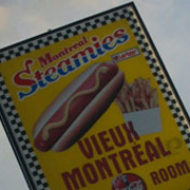(x-posted on the Social Media Collective Research Blog)
In late March and early April, I attended three events that together signal some interesting shifts in thinking about music technology and sound. The first, a day-long symposium on March 24th I co-organized with Nancy Baym, was entitled “What Is Music Technology For?” It came after a weekend-long instalment of MusicTechFest, which brings together people from the arts, industry, education and academe to talk about music technology. For our more academically-focused event, we brought together humanists, social scientists, engineers, experimentalists, artists and policy activists (among others) to discuss our mutual interests and investments in music technology. Rather than editing a collection that would come out two years from now, Nancy and I decided to try assembling a manifesto, a project that gave direction to the day and also helped us think in terms of common problems and goals.
The result is now available online at musictechifesto.org, and I encourage you to visit, read and sign.
That event was followed by two others which I think show at least a possibility for a sea change in how we talk about music technology and with whom.
The following weekend found me at the University of Maryland, for their “Sound+” conference. I presented a (still early version of) my work on Dennis Gabor and time-stretched audio, and listened to a wide range of papers from (mostly) English and literature scholars on sonic problems. But of course Maryland is home to the Maryland Institute for Technology in the Humanities, and that combined with a critical mass of people interested in theory and interdisciplinarity meant we also had some conversations that looked outward, especially a roundtable on mutual sonic interests across the humanities and sciences at the end of the second day.
The weekend after that (4-5 April) found me at the Machine Fantasies conference at Tufts University (across town), which brought together musicologists, anthropologists, composers, engineers, artists and computer scientists to have conversations about what it means for machines to make music, and how we might think about both the pasts and the futures of music technology.
Combined with other events, like the huge MusDig conference at Oxford last summer, there seems to be a growing interest in working across established interdisciplinary boundaries. In other words, while humanists and social scientists are used to talking with one another, and while engineers and computer scientists are used to talking with one another, there now seems to be a growing (and one hopes, critical) mass of people who want to work across intellectual and institutional boundaries.
Speaking as someone coming out of the humanities and “soft” or “critical” social sciences, this is a major change brought on, I think, by several concurrent developments (and keep in mind this is musings in a blog post, not a careful intellectual history):
1. A renewed interest in making, probably heavily lubricated by the turn to the “digital humanities” in some fields, but also by a re-assessment of the role of critique. A generation ago, I came up learning that to be critical required one to be separate. But increasingly, we are seeing integration of critique with other scholarly modes. Anne Balsamo’s mapping of the technological imagination in Designing Culture captures this beautifully.
2. A new openness to humanistic and interpretive approaches in the world of music engineering and science. I can’t say that I know them to have been “closed” in previous generations–that may well not have been the case. But I have personally spent the last 10 years or so in dialogue with people in a variety of scienc-y and engineering-y spheres of music technology design, development and research. I have found a great deal of openness to and interest in the kinds of ideas in which I usually traffic, and what began really as a “study of” a group of people has evolved into a series of “collaborations with.” To that end, and to provide a little institutional leverage (or play space), I have joined McGill’s Centre for Interdisciplinary Research in Music, Media and Technology (CIRMMT, pronounced “Kermit,” like the frog).
3. Some of this may also be the result of changing institutional configurations and easy familiarity with tools. Two generations ago, when places like Stanford’s Center for Computer Music and Acoustics were getting off the ground, to do anything with computers and music (or music and technology more broadly), you needed a space and resources, you needed specialized equipment, and you needed specialized knowledge. Today, those tools are cheaper and more available than ever. There is something lost when people aren’t heading over to the mainframe or computer lab and running into each other that way–common spaces are so central to interdisciplinarity. But there is something gained when we all have an easy sense of the available tools, and some of our questions are beginning to converge.
4. Some of the theoretical concerns of humanists, like what it means to make or listen to music, what it means to be a musician or fan, what technology is or should be, how the various music industries ought to be organized, and what the nature of an instrument or instrumentality is–these questions are suddenly on the table and pressing issues for everyone. The answers we come up with now can have practical impact as we imagine the next generation of music technologies, or worry after the increasingly precarious status of people who make their living from music or sound work. In other words, we are in the enviable–and impossible–position of having a lot of thinking to do, and having a chance to act on those thoughts.
These are exciting, challenging, messy and incomplete developments. They hold a great deal of promise. It is up to us to pop our heads up from our silos, to think big, and try to work together in different kinds of spaces to move some of these shared agendas forward.
